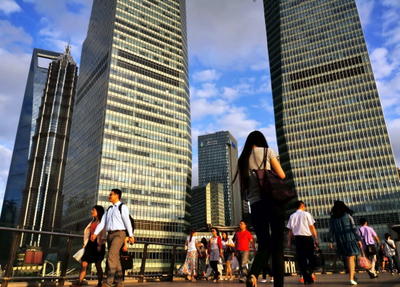The cooler heads warned that there was still a lot of momentum left and that, independently of government reluctance to provide additional boost, the Chinese economy was entering an upturn of cyclical recovery at the same time as it was adjusting to a somewhat lower long-term growth trajectory.
As growth in 2012 dipped below 8 per cent, the government has remained relatively calm, taking only modest steps to stabilise growth. So-called ‘policy paralysis’, some market participants suggested, saw policy makers left ‘way behind the curve’ because of the once-a-decade leadership transition. Others reckoned that that explanation lay in the underlying view among officials that the growth downturn was as much structural in nature as cyclical. Huang noted that the economy’s potential growth rate had already moderated, from 10 per cent in 2000–10 to an estimated 8 per cent over 2010–20, and would slow further to 6 per cent over 2020–30. If these figures were roughly correct, then the 7–8 per cent range may have become the ‘new normal’ of Chinese growth. The government revised its GDP growth target downwards to 7.5 per cent in 2012, from 8 per cent in previous years — the outcome was a smidgin higher growth at 7.8 per cent — and looked set to take it down further, to 7 per cent in 2013.
Policy makers had learned a lesson with the stimulus package in 2008 and were reluctant to adopt aggressive expansionary policies as the economy picked itself up last year. The government’s massive investment programs in the past had been criticised for increasing financial and fiscal risks so government officials accepted the need to tolerate slower growth in order to underpin its sustainability. The policy objective of stabilising, rather than boosting, growth in the face of increasing downside risks to the economy came to dominate policy thinking.
The cooler heads were right. There are clear signs of a strong growth outlook this year and the World Bank has already upped its GDP growth forecast for 2013 to 8.4 per cent. Industrial output is growing at 10 per cent and inflation has been running at a moderate 3 per cent.
Yet there’s nothing automatic or mechanical that guarantees the Chinese economy will go ticking along at 7 or 8 per cent over the coming decade. Quite apart from adjustment to continuing weakness in external markets, there are challenges at home that, not met, could knock it right off course.
In this week’s lead essay, Ligang Song identifies over-reliance on state intervention and the stranglehold of state-owned enterprises (SOEs) as the Chinese economy’s Achilles heel. ‘If China wants to take economic development to its next stage’, Song argues, ‘it will have to nurture the market-based economy and establish a more robust and adaptable regulatory framework, providing fair access for both SOEs and private companies to capital and technology and creating a social culture that builds entrepreneurial capabilities and extends respect to the contribution that entrepreneurship makes’.
Over the past three decades, the Chinese business landscape has changed remarkably. Reform of ownership in the state sector, the growth of private enterprise and the entrenchment of market incentives have laid the foundation for China’s rapid economic growth. Reform has favoured the entrepreneurship that has powered the Chinese economy. The private sector has contributed an increasing share of national output.
Were that reform to stall, the engine of Chinese economic success and its higher-than-average growth rate would falter. Among the unfinished tasks are the need to: fix the relationship between the state and SOEs; deal with state monopoly of key sectors of the economy; improve corporate governance; reform the financial market so that private business has fair and equitable access to capital for investment; and improve the regulation of enterprise and China’s legal system as it affects the way the market functions. Chinese institutions are not yet sufficiently compatible with allocating resources efficiently via a well-functioning market economy to guarantee continuing high economic growth. If the economy is to continue to grow, even at a more moderate rate, and avoid the ‘middle income trap‘, it has to graduate from simple manufacturing production, relying on the mobilisation of labour, to growth led by industrial upgrading, driven by high rates of human capital formation and research and innovation. As entrepreneurial-driven growth has to overtake factor-driven growth if the pace of growth is to be sustained, the urgency of finishing these reforms will be more pressing.
As Song hints, the unfinished business of Chinese reform is deeply political in character. Many people are thinking hard about the economic and political challenges that China faces in the years immediately ahead — in particular about the nexus between continuing economic success and political reform. Political system reform, it is increasingly understood, is deeply connected to getting China’s big economic problems sorted out. Reform of Chinese SOEs is connected at the hip with political reform that will challenge vested interests and the way in which centres of economic power relate to political power in a one-party state. The task of finishing unfinished enterprise reform will not be easy.
Peter Drysdale is Editor of the East Asia Forum.


Can China keep growing that rapidly? Of course not. There is no such thing as perpetual growth. Somewhere along the line, a pause or slowdown is needed to cool the heat. Or else…
(btt1943, vzc1943, ttm1943)